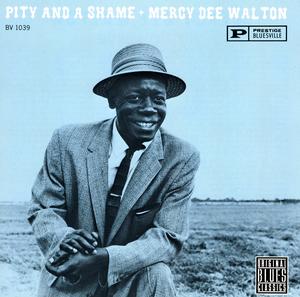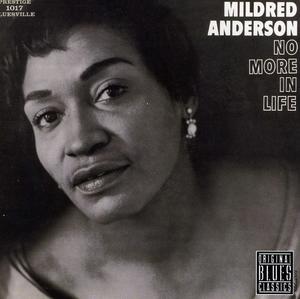I’ve been doing quite a bit of DJing in Sydney, more than I did in Melbourne. I quite like it – I need the money for CDs (or downloads), I like keeping my hand in, DJing-wise, and DJing gets me out to see dancing people while I’m injured and not dancing.
I can’t say the actual DJing has been awesome. This is partly to do with my own less-than-awesomeness, but also to do with my adjustment to a scene which doesn’t have the sort of crowded, hard core dancing I’d DJ for in Melbourne. Sydney actually has more social dancing nights than Melbourne, it’s just that this greater number of (diverse) gigs means that the dancers are spread across more events, leaving you with fewer people at individual events. There are also the usual issues RE teachers and troupe dancers – they don’t go social dancing as much.
I suppose (though it’s impossible to generalise) that the usual factors contribute: these guys are already dancing three nights a week and not interested in another social dancing; they value performing and teaching over social dancing; they’re involved in tight knit social groups which make them reluctant to explore social events without their homeys. What this means for me as a DJ, is that there are fewer of these more experienced, hard core dancers out social dancing when I’m DJing. Which means that you’re left with a crowd who have less dancing stamina, less experience with more complex rhythms and patterns, and less interest in hard core dancing. This isn’t an entirely bad thing – I’ve always liked DJing for new dancers, if only because they haven’t developed a rigid set of dance and music preferences – they’re just in it for the fun. But it does mean that I have to take more care with the tempos and song selections. But I’m not complaining – I am still enjoying DJing. And there are still quite a few experienced dancers out there on the floor – the types of people who aren’t interested in the teaching and performing, but are interested in gettin’ jiggy on the dance floor.
I DJ one night at a pub which is heaps of fun. Pub or bar gigs are always good, as there’s alcohol involved, and that usually loosens the dancers up a bit. But at this gig there’s a larger number of older dancers who don’t really have the dance fitness required for hard core lindy hop. When I say older, I’m talking people in their mid to late 40s and higher. I know, it’s not actually ‘older’ at all, but once you get over 20, if you’re not actually dance-fit, lindy hop is really challenging, especially at higher tempos. As Frankie Manning says, “Get in shape to do lindy hop, don’t do lindy hop to get in shape.” I also find that this crowd has more interest in talking and socialising than dancing; they tend to do things like dance two songs in a row then stand on the dance floor talking rather than moving off the floor. This discourages other people from dancing, and means that I’m left with an empty floor for a song. So I have to ‘start from scratch’ with the next song. They do this regardless of the type of song I’m playing in that third spot. They just want to talk.
As you might expect, this makes this gig the most interesting and welcoming, socially speaking. As new folks in town, we’ve always preferred this gig, just for hanging out and meeting people. But it’s a very difficult crowd to DJ for. There’s also a large number of rock and roll dancers there, and these tend to be the older dancers. Who really aren’t into old school swinging jazz. And seeing as how that’s where my DJing preferences lie – right back there in the 30s, well before the shuffle rhythms and un-swingness of rock and roll. And I’ve even been easing off the jump blues lately, so I’m not really offering much to this particular crowd.
I have played some really bad gigs at this venue. But I have also done some good sets. Last gig I did there the sound set up was seriously fucked, so I had trouble getting anything to sound ok, let alone being able to concentrate on the combination of songs. But I have, finally, figured out that a combination of tempos and eras works with this crowd: old school for the lindy hoppers, 50s jump blues and later swing for the rock and rollers. I refuse to play rock and roll (mostly because I don’t own any and don’t really want to buy any), but I will play 50s Basie, Witherspoon, etc, leaning on their later, less-swingy, more-jumpier stuff. It’s not ideal, and I really hate seeing what it does to people’s lindy hop, but I do breathe a sigh of relief when the floor fills up again.
To make it work at this gig, I need a mix of dancers – I need younger, hard core lindy hoppers. I need the drinking, less-dancing rock and rollers for the social, party vibe. I simply don’t have the skills to work this crowd as-is. I find it frustrating. And while I’d usually muddle through for a paid gig, I do this one pro bono for mates, so I’m a little less happy about the deal. It’s mostly that I’m frustrated with myself for not being able to make it work. And I’m frustrated because I can’t play the sort of music I really love, all the time. I do get to play it, just not in a big, solid block. And I certainly don’t get to experiment with even early (ie late 20s) stuff or with things like recretionist New Orleans doods like later Bechet – that stuff goes down like a ton of bricks with this crowd. The problem is really that they simply don’t have the musical experience that I need to be able to play a really diverse set. But then, these sets remind me that that stuff (the 20s and NO revivalist) isn’t that great for lindy hop – it doesn’t quite swing properly, it often doesn’t have the right ‘feel’. Frankie wouldn’t like it.
So I don’t think of this gig as a ‘crap gig’. I think of it as the most challenging gig on the calendar, and I’m stretched to make it a successful one. I’m not quite there, yet.
Beyond this one, I also play a blues night. It’s once a month, and the only blues night on the calendar. It’s pretty well attended, but the venue is a little big for blues dancing, so you don’t get the right vibe in the room. Blues really needs a crowded, smaller room that feels like a crowded bar. Well, that’s what I like for blues – I like to play a rollicking, rolling blues room where people are shouting and sweating and partying hard. Lots of energy and fun. I’m not interested in playing cuddle-blues gigs at all. Boooooring. But this set isn’t too bad a gig. The dancers are new and enthusiastic, and blues is simple enough (because it’s slower and it’s taught in a simpler format), easier than lindy hop, so dancers feel more confident. I don’t have a very big collection of music for blues dancing, so I’m not actually all that specialised – I tend to play across styles. Though I avoid soul and funk (because that’s not blues, and because there are specialist soul and funk DJs in the broader music community who use original vinyl and make swing/blues DJs look like lame amateurs), I don’t lean as heavily on olden days stuff as I do for lindy. This means I have a better chance of pleasing more people. Or rather, I have a better chance of pleasing them with less effort. When you’re playing old school, I think you have to work harder to draw people in. With a mixed set, you eventually find something someone likes, even if it’s just the right ‘style’ for their tastes. This is how I started DJing lindy hop. I think it can be the mark of a newer DJ, but I also know experienced, truly top notch DJs who play fabulous mixed sets. It’s just that DJs often specialise after a few years as their own musical interests follow particular trails and historical periods or particular artists.
As a dancer, I like both types of DJs. Though I loathe a DJ who changes gears without the clutch: smooth transitions are essential for making this work.
But I like the blues sets. The crowd is enthusiastic and supportive, the set up of the room lets them get physically close enough to talk to me (and let me know whether they like what I’m playing), they like looking over my shoulder from the raised mezzanine behind me to see how I’m DJing (blokes like this especially – they like seeing the technical side of DJing), and like hearing their responses to my music and knowing whether I’m doing what they’re interested in. I would like to use a smaller room, but I’m not going to bitch about that when the crowd is so enthusiastic and welcoming. It’s also in a bar, and bar + blues = good news for the DJ.
I also play a couple of other lindy gigs. One is a twice-per-month larger event in a church hall, another is a fortnightly, smaller event in a smaller bar venue. The larger one is tricky. The sound set up isn’t adequate for the large, echoey, high-ceilinged church hall. It’s a large space, and not particularly ‘nice’. It’s fine once the lighting’s fixed, or if there’s a large crowd. But otherwise, it’s fairly ‘church hally’. There’s no bar, either, which is bad news at this event, which is already in pretty dire need of some loosening up. One of those two monthly gigs is also explicitly marketed as a ‘beginners’ night’. This is a mistake, I think. It means that anyone who doesn’t think of themselves as ‘beginner’ doesn’t turn up. And of course, with dancers being as status conscious as they are, we see no troupe members or teachers of any type at these ‘beginner’ nights. Ordinarily, this wouldn’t worry me – I quite like a packed room of beginner dancers high on their own endorphines, discovering the headiness of physical contact with strangers. But this gig doesn’t pull a large crowd at all, and it’ll have to pull a massive crowd to fill that hall. So it ends up kind of quiet and empty. Tricky stuff. I’m not all that good at working smaller crowds (though I am improving), so this night is really challenging for me.
The last social dancing night is fast becoming my favourite. The venue is the same as for the blues night, but it works better for lindy hop. It has a good set up, with the sound desk facing the speakers rather than being behind them (it makes me crazy that lindy hoppers can’t seem to grasp the fact that sitting behind the speakers sucks for DJing – I want them on the opposite wall so I can hear what’s going down!). The venue is the right size for the crowd. I can get there easily on the bus, or catch a train (rather than only having the train option for the church gig – which requires my walking to the station, which hurts my foot a lot). The sound set up is generally pretty good (not perfect, but the best in this town). There’s also a bar! I found this crowd tricky at first as it’s a mid-week, mellower gig. But I’ve gradually figured out that that does not mean that I should only play low-energy music. I need to mix it up and work the energy just as I would with any other gig. But because the crowd is smaller, it requires a little more work.
In general, this town dances to very, very, very low tempos. We’re talking between about 110bpm and about 150bpm. That’s super, super low. When we get to 155bpm, they switch to balboa. There are a number of reasons for this. 1) the DJs play a lot of groove, which is often lower in energy – the uppy-downy bounce of the big band is smoothed out by super-behind-the-beat smaller bands. 2) the DJs play the same music every set – they don’t have large enough collections to really push their DJing, and encourage them to explore new music. 3) the DJs tend to all play the same songs. This could be a result of music sharing or simply sharing similar tastes. 4) the transitions between tempos isn’t terribly smooth – there are often blocks of faster music for ‘balboa’, moving straight back down again to 110. So we hear 110, 120, then suddenly a few at 200, then down again to 110. And of course, everyone sits down at those ‘balboa’ tempos, unless they do dance balboa. I do like balboa, but it’s not as exciting to watch at 200 as badass lindy.
My comfort zone for dancing lindy hop is about 140-200bpm. I am comfortable at 180, start to work at 200, then am challenged above 200. Well, when I’m dance-fit and not injured. But I have been dancing for a while. Though I’m certainly not a badass lindy hopper or competitor extrovert; I’m actually pretty conservative. In the olden days (ie at the Savoy in the 30s), 180 was average. At Herrang the DJs aren’t to play under 160bpm. This is quite fast – most contemporary ‘disco’ music is about 120 bpm.
These higher tempos are very challenging if you’re very tight in your upper body, or if you don’t do triple steps or simply don’t have very solid technique. Smaller steps, stay relaxed, do your triple steps (because followers need them to travel!) – all that helps you lindy at higher tempos. But these are often things that are neglected in class. And many dancers don’t hear older music (which tends to be faster) in class, so they’re not used to the structures of the music. They want to do their smaller, subtler body movements, when big band 30s action and faster music want you to do larger movements (as in, swing outs rather than body rolls), and to think of musicality in terms of combinations of these larger moves, thinking of the music in terms of phrases, rather than thinking of musicality in terms of responding to each individual note or sound. But if the moves you’re taught in class are about smaller, finer movements, you’re going to be kind of at a loss when you hit the social dance floor and hear faster, older music.
At any rate, when I started DJing in Sydney, I came in swinging, just as I would have in Melbourne, starting at about 130bpm. There isn’t terribly far to go from 130 to 150bpm. I am finding that the dancers are stretching a bit, but things are still pretty slow, generally. I used to play much faster gigs at the mostly-beginner Funpit in Melbourne. But I try to ‘begin as I mean to go on’ – so if I don’t want to sit on 110 all night, I need to start higher. I like 130 as a beginning tempo, though I’d really prefer to start on 140 and not drop below that. I won’t start on 120 any more – it’s just too freakin’ slow. As you can see in the set list below, I started at 140 and was actually doing relatively higher tempos at first. This was in part because the music in the class was higher than usual (they were doing charleston).
The preponderance of balboa is both a blessing and a challenge. On the one hand, balboa lets dancers get used to dancing to faster music (they’re really not much beyond 200 for faster music here), but on the other, it means that they default to balboa as soon as they hear slightly higher tempos. And balboa is less physically exhausting than lindy at these higher tempos, so they don’t work up that dance fitness that you need for faster music. I’m not disparaging balboa here – it’s a craft. It’s a challenging dance. It’s an awesome dance. But the movements are smaller. Though I do like what balboa has taught a lot of Melbourne dancers – bounce (or pulse as they call it). Smaller steps. Leading ‘with the body’ – by moving their body to move their follower’s body (rather than using their arms to move a follower). A more relaxed upper body, especially at higher tempos. All this is fabulous for lindy too. I also have some frustrations with the type of music Sydney people hear as ‘balboa music’. Someone’s obviously been teaching a lot with Mora’s Modern Rhythmists, Campus Five and Sydney Bechet. They hear revivalist New Orleans as ‘balboa music’. This drives me nuts when I’m trying to play this stuff for lindy hoppers; the lindy hoppers sit down, the balboa dancers get up. From what I can learn, balboa dancers in the olden days were into the same types of music as lindy hoppers. So there was a lot of big band action in ballrooms. I can’t really see them getting into revivalist New Orleans action… but I could be wrong. Either way, it niggles me to see balboa dancers hear one type of music as ‘balboa music’, especially within the broader swinging jazz family: that’s way to rigid a definition, even for a purist like myself.
But this will change as balboa dancers travel more and get more experience with a wider range of music. It’ll also help the lindy hoppers to travel a bit more too.
For me, DJing, I have to take the long term view. I can’t just jump in and play with an agenda and expect them to DANCE. I have to gradually add stuff in and move the general vibe of my set in a particular direction. As a new DJ in town, all my music is ‘new’ to them – they haven’t heard me overplaying my favourites for the past few years. So I do have some liberties. But it’s also been important to find out exactly what they’re dancing to otherwise. Basic research tool? My getting out there and dancing. So you can see how my DJing might have lagged a bit since I’ve been off the floor. At any rate, because I’m DJing so much, I can start adding in ‘new’ songs, while also building up a body of music which is ‘familiar’. While I type this, part of me is shouting, “Hey! Arrogant, much?” I’m not sure I actually have a solid grasp of what dancers are into in Sydney – I can’t see them when they’re sitting down behind me. I’m not getting out to social dance and hear and see what they’re dancing to in other DJs’ sets. And I’m not in class, hearing the teachers’ music. So I’m not entirely sure my instincts are tuned in properly. It’s all a bit frustrating, and I do worry that the longer I’m out of dancing, the more my DJing will decline. I’ve seen it in other DJs: if you don’t dance, your DJing inevitably declines as you get disconnected from what actually feels good for dancing. It’s a struggle if you’re generally someone who only dances within one particular style or one particular tempo range, but it’s impossible to stay on top of things if you’re neveR dancing to anything.
In that vein, I’ll be doing my first set for balboa dancers next week. I’ve tried to score a balboa set in the past in Melbourne, but have been knocked back a few times. This could be because I suck, because I’m not a hardcore balboa dancer, or because I’m just not in the loop. But we’ll see how I go. I’m looking forward to it – I think I’m going to learn a lot. I’m putting together a list of ‘maybe’ songs (as I usually do before a gig), and I’m looking forward to playing a wider range of tempos. I have a lot of faster stuff that I rarely, if ever, get to play for dancers. Thing is, I have absolutely no idea what these guys play at a regular balboa night, so I’m not going to have any idea what their ‘normal’ music is like. I will make it clear to the dancers on the night that I have no experience, and that I’d like feedback. The organisers also know I haven’t done this before, so they’re going to be ready with suggestions (hopefully). It’s not a paid gig, either, which is good… although it’s not, really. I’m going to enjoy it, I think. Once I stop being nervous.
Anyways, here’s the set I did last week at the fortnightly gig in the smaller blues/bar venue. It’s a ‘lindy hop’ set. The tempos are higher than I usually hear at that venue. At one point a guy asked “can you play something slower?” This was while I was playing ‘Chimes at the Meeting’ which is 245bpm, so I was “of course – I was just about to drop the tempos a lot. This next block will be much slower.” And it was. I’m kind of working the wave here, but I think that these days I’m focussing a bit too much on the transitions between musical styles, and not enough on the tempos. It’s almost as though I’ve lost touch with how dancing to four songs at 150 in a row can feel (bit boring, mostly). I think this is a consequence of my not dancing these days. But it’s also a consequence of my DJing for people who like a wider range of tempos. If you’re happy at 180bpm, three songs at 150 are a ‘rest’. But if 160 is your max, then three 150 songs is a real stretch. Sigh. These are the little things that I’m worried about, as a DJ. And I do wonder if I’ll be able to continue DJing if my foot never recovers (which the specialist says is a real possibility – though I’m going to address that again at our appointment this week). Three months off dancing already, and I’m having trouble with the thought of no more dancing ever.
If you’ve ever seen any of my other sets or heard me DJ, you can see from the set below that I didn’t play terribly much new or challenging stuff. An awful lot of old favourites, stuff I overplay. There are a few new things that I’ve bought from emusic or on CD lately (mostly emusic, though – hence the incomplete details). That Bob Crosby song ‘Rag Mop’ is fully sick. I love that MBRB version of ‘Mr Ghost Goes To Town’ – I will never play the Campus 5/MMR version (which does it?) again. MBR’s version just has more pep and zing to it. It’s also a little faster (maybe 10 or 20bpm – enough to spice it up a little). The musicianship is certainly far better. There was a birthday/farewell dance at ‘Jersey Bounce’, hence the sudden style change. After that, I suddenly had the urge to go all groovy and hi-fi. I really like that Ernestine Anderson album atm, even though Gene Harris is involved. That version is way better than the live one we hear a lot. Then I decided I was over this slumpy, low energy groovy stuff (it was also making people sit down rather than jump about like fools). So I played ‘Smooth Sailing’ because everyone knows it, and because I like to pair it with ‘Lemonade’. Note the tempos there – boooringly 110 or so. The dead zone. So we went up a bit with the Jay McShann one. That song ‘Blue Monday’ is on my overplayed list, but it has lots of shouty energy. From there I did drop down with the Basie, but it’s another high energy, live song that’s good for building a sleepy room. The inclusion of CJam Blues there should let you know just how badly I was leaning on the overplayed list. That song is overplayed everywhere in the lindy hopping universe. The last two songs were requests. Then I had to RUN for my bus.
While I am leaning on the overplayed stuff, I’m not sure if it is actually overplayed here in Sydney. Many of these songs I know I’ve played a lot and still do play a lot. I try to avoid them at exchanges, as people are at exchanges to be challenged and to experience something new and exciting. But at a smaller gig like this, familiar stuff is often welcome, and it’s hard to resist the way people respond to something they know, especially if they’re finding the other stuff a bit challenging or unfamiliar. I do tend to DJ lazy and lean on the familiar, and I will try to fix that up. Thing is, some of these songs I know I’m the only one playing, so I never get to dance to them, so they don’t feel overplayed to me – I know them well, but I don’t know them well with my body.
Any how, here’s the set. name, artist, bpm, year, album, length, last played (the last played will vary – I did the set on the 4th, starting at 9pm, so ignore the last played times/dates on the ones I’ve listened to since).
Massachusetts Maxine Sullivan 147 1956 A Tribute To Andy Razaf 3:19 4/03/09 8:58 PM
My Baby Just Cares For Me Nina Simone 120 The Great Nina Simone 3:38 4/03/09 9:02 PM
Bli-Blip Jonathan Stout and his Campus Five 140 2007 Moppin’ And Boppin’ 2:44 4/03/09 9:05 PM
Rag Mop Bob Crosby and the Bobcats 164 1950 Bob Crosby and the Bobcats: The Complete Standard Transcript 2:15 4/03/09 9:07 PM
Savoy Blues Kid Ory 134 1945 Golden Greats: Greatest Dixieland Jazz Disc 3 3:01 4/03/09 9:10 PM
Ain’t Nothin’ To It Fats Waller and his Rhythm 134 1941 Last Years (1940-1943) (Disc 2) 3:10 4/03/09 9:13 PM
Summit Ridge Drive Artie Shaw and his Gramercy Five 128 1940 Self Portrait (Disc 2) 3:21 4/03/09 9:17 PM
A Viper’s Moan Willie Bryant and his Orchestra with Teddy Wilson, Cozy Cole 153 1935 Willie Bryant 1935-1936 3:26 4/03/09 9:20 PM
Mr. Ghost Goes To Town Mills Blue Rhythm Band 192 1936 Mills Blue Rhythm Band: 1933-1936 3:24 4/03/09 9:23 PM
Solid as a Rock Count Basie and his Orchestra with The Deep River Boys 140 1950 Count Basie and His Orchestra 1950-1951 3:04 4/03/09 9:26 PM
Joog, Joog Duke Ellington and his Orchestra 146 1949 Duke Ellington and his Orchestra: 1949-1950 3:01 4/03/09 9:29 PM
Oh I’m Evil (05-01-41) Una Mae Carlisle 158 1941 Complete Jazz Series 1938 – 1941 2:25 4/03/09 9:32 PM
Turn It Over Bus Moten and his Men 148 1949 Kansas City Blues 1944-1949 (Disc 3) 2:38 4/03/09 9:35 PM
Did You Ever See Jackie Robinson Hit That Ball? (06-29-49) Count Basie and his Orchestra 155 1949 Complete Jazz Series 1947 – 1949 2:15 4/03/09 9:37 PM
Cole Slaw Jesse Stone and His Orchestra 145 Original Swingers: Hipsters, Zoots and Wingtips vol 2 2:57 4/03/09 9:40 PM
Bearcat Shuffle Andy Kirk and his Twelve Clouds of Joy with Mary Lou Williams 160 1936 The Lady Who Swings the Band – Mary Lou Williams with Any Kirk and his Clouds of Joy 3:01 4/03/09 9:43 PM
The Back Room Romp Rex Stewart and his 52nd Street Stompers 152 1937 The Duke’s Men: Small Groups Vol. 1 (Disc 2) 2:49 4/03/09 9:46 PM
Chimes At The Meeting Willie Bryant and his Orchestra with Teddy Wilson, Cozy Cole 245 1935 Willie Bryant 1935-1936 3:01 4/03/09 9:49 PM
Peckin’ Johnny Hodges and his Orchestra 165 1937 The Duke’s Men: Small Groups Vol. 1 (Disc 2) 3:10 4/03/09 9:52 PM
Walk ‘Em Buddy Johnson and his Orchestra 131 1946 Walk ‘Em 2:53 4/03/09 9:55 PM
Hungry Man Louis Jordan and his Tympany Five 135 1949 Louis Jordan And His Tympany Five (vol 6) 3:08 4/03/09 9:58 PM
Four Or Five Times Woody Herman Orchestra 141 The Great Swing Bands (Disc 2) 3:09 4/03/09 10:03 PM
Jersey Bounce Ella Fitzgerald 134 1961 Clap Hands, Here Comes Charlie! 3:36 26/01/09 9:50 PM
Goin’ To Chicago Blues Ernestine Anderson with Ray Brown, Gene Harris, Red Holloway, Gerryck King 135 1984 When the Sun Goes Down 4:53 4/03/09 10:11 PM
Smooth Sailing Ella Fitzgerald 118 Ken Burns Jazz: Ella Fitzgerald 3:07 4/03/09 10:15 PM
Lemonade Louis Jordan and his Tympany Five 117 1950 Louis Jordan And His Tympany Five (vol 6) 3:17 4/03/09 10:18 PM
Blue Monday Jay McShann and his Band with Jimmy Witherspoon 125 1957 Goin’ To Kansas City Blues 3:40 9/03/09 8:58 AM
Every Day I Have The Blues Count Basie and his Orchestra 116 1959 Breakfast Dance And Barbecue 3:49 9/03/09 9:01 AM
C-Jam Blues Lincoln Centre Jazz Orchestra with Wynton Marsalis 143 1999 Live In Swing City: Swingin’ With Duke 3:34 4/03/09 10:29 PM
Blues In Hoss’s Flat Count Basie 144 1958 Chairman Of The Board [Bonus Tracks] 3:13 4/03/09 10:32 PM
All The Cats Join In Benny Goodman 176 All the Cats Join In 4:23 4/03/09 10:37 PM
Shake That Thing Mora’s Modern Rhythmists 227 2006 Devil’s Serenade 2:58 30/09/08 3:31 PM

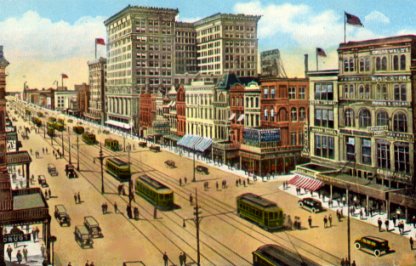

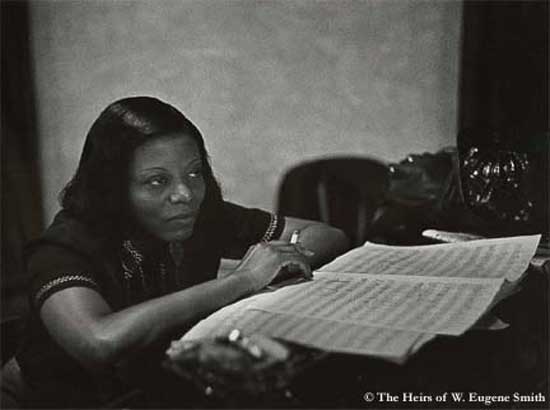




 … featuring my new love, Jack Teagarden. A little hi-fi ‘trad’ jazz… (more details
… featuring my new love, Jack Teagarden. A little hi-fi ‘trad’ jazz… (more details 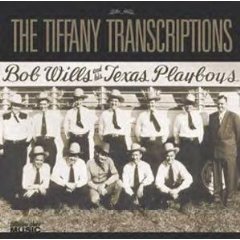 Suddenly, I want
Suddenly, I want 